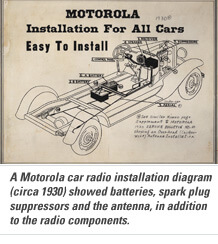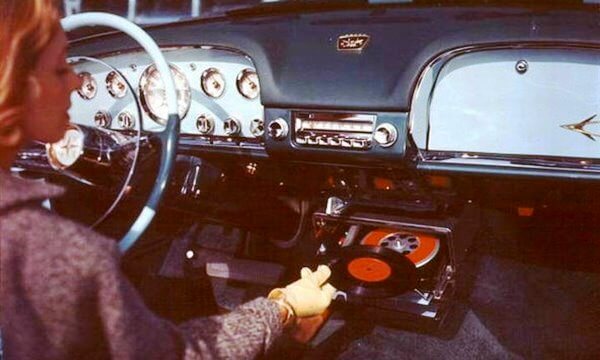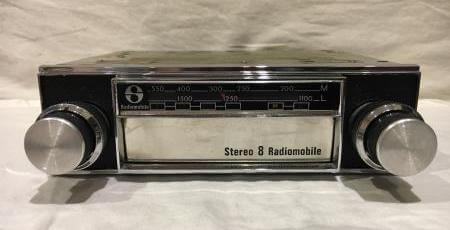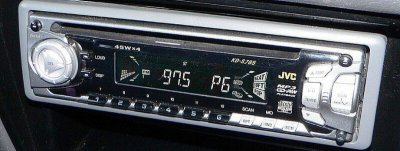History Of The Car Stereo
The intriguing history of the car stereo encompasses AM radio, in-dash jukeboxes, to Voice Control multimedia systems, and they are a critical element for a perfect road trip.
Of course, we all want the perfect car, but without a full car stereo system and a simmering soundtrack, driving would be boring.
Of course, back, and I mean way back in the day, that was the case for every driver. These days, however, we can simply connect our smartphones to our head unit via Bluetooth, crank up the volume and get going.
Once upon a time, a wireless car radio was the height of innovative car audio technology. The introduction of the car radio revolutionised driving, and from a Single DIN radio to a Double DIN multimedia DVD player, car stereos haven’t stopped innovating.
In this blog, I look into the history of the Car Stereo and see how it has evolved and become integral to our commutes and road trips.
The History Of The Car Stereo – The Early Years
Amateur radio enthusiasts experimented with car stereos in the early 1900s, and the first known car radio of any sort was in England in 1901, when Guglielmo Marconi fit a radio to a Thornycroft steam powered vehicle, but the radio only received data, not sound.
Then in 1904 the ‘Father of Radio’ Lee de showed a demonstration of a car radio at the Louisiana Purchase Exposition in St. Louis.
Radios back then and for the next 20 years or so were placed on the back seat of a car, however, and because the engines were so loud, drivers had to stop the engine to listen to music.
It wasn’t until 1927, with the invention of a method of suppressing ignition noise by Elmer Wavering in the USA, that a car radio could be heard when the vehicle’s engine was running, and this is when the race to create the first in-dash car radio.
The first in-dash car radio was installed in 1929 by two Harvard professors in a Packard 645 Convertible Coupe during the manufacturing of the car, and the history of the car stereo really started to evolve.

In 1930, the first ever commercially successful car radio was created by The Galvin Corporation of Chicago, USA. The new car radio was called the Motorola 5T71 sold for between $110 and $130 – about $1500-$1800 in today’s money, and it added about 25% onto the price of the car.
Over the years, as with all technologies prices fell, mass adoption of in-dash car radios became a reality and by the end of the 1930s push button AM radios were considered a standard feature in most people’s cars.
There were several innovative advances, and then in 1952, Blaupunkt became the first manufacturer to offer FM receivers. And just a year later, Becker introduced the first AM/FM car radio with a station search/tuning option.
Just in time for the Rock n Roll revolution, and by 1963, 50 million cars, over 60 percent, were outfitted with radios.
From Car Radio To Car Stereo Jukeboxes
Drivers had to wait until 1956 before they could actually choose the music they wanted to listen to. It was probably the most bizarre innovation in the history of the car stereo when a Chrysler in-dash turntable that played 7-inch singles was launched. Imagine that!

The Chrysler Highway Hi-Fi never caught on, however, due to poor reliability, high warranty costs, and the limited variety of the Highway Hi-Fi record catalog that could only be played in the car stereo record player.
Chrysler partnered with RCA for their next concoction the Chryco RCA Victor 45 Record Player in the early 1960s. This was a much bigger success as this record player could play standard and highly popular RCA 7” singles. Not only that, it could stack 14 7-inch singles, and drop them onto the turntable like a Juke Box.
Cassette Players To CD Players
With the swinging-sixties in erm, full swing, RCA teamed up with Lear Jet Corp. to launch the first Stereo 8, or eight-track tape music cartridges, and actual car stereo.
Until then, all car radios had used a single, mono audio channel, but with the introduction of stereo car owners could now start to power a more dimensional soundscape.

Early stereos placed one channel on the front speakers and the other on the rear speakers, but the left and right format soon appeared in eight-track car stereos during the sixties.
And even though the Stereo 8 technology was clunky these car stereo receivers were highly successful until the 1970s.
Until the compact cassette became all the rage and ushered in the modern era of car stereo head units.
The first car stereo cassette players were notoriously hard on tapes, and most people who played their music this way had many tapes eaten by their head unit.
In fact, cassette manufacturer Maxell based its brand on the durability of their cassettes, but of course these were eaten by the greedy car stereos of the 1980s.
While cassette players were all the rage, CDs were quietly coming along and the first ever car stereo CD player was launched by Pioneer in 1984. This introduced better sound quality and instant skipping from tune to tune.
Compact Disc technology was still in its developing stage, however, and the cassette player head unit remained dominant throughout the 1980s. As the decade came to an end car stereo CD players became the popular choice for car manufacturers, as did detachable faceplates.

With car crime on the rise, there was an industry-wide attempt to secure car stereos, and in 1989 Pioneer introduced the first ever detachable faceplate.
This helped cut car crime throughout the 1990s as the removed faceplate gave the impression that there was no car stereo installed. And even if a thief had stolen the back only, the car stereo would not work with any other faceplate.
Looking to install a new stereo? Check out this how to for guidance: How To Install A New Car Stereo
Bluetooth Era Of Touchscreen Multimedia Players
After the millennium and throughout the Noughties, we saw the introduction of USB and Bluetooth technology in car stereo receivers. This allowed drivers to play MP3s and connect their head units with their smartphones, allowing them to use their full iTunes library in their car.
Satellite radio also took off throughout the first decade of the 21st century, and in the US saw the introduction of Sirius Satellite Radio, which gave subscribers a variety of music, talk, news, and sports stations.
Bluetooth also introduced Double DIN touchscreen multimedia receivers as aftermarket car stereos became GPS SatNav devices and DVD players, although the touch screen capabilities were limited at first.
This last decade, however, has seen car stereos become as integral to life as our smartphones and home entertainment systems.
As well as much improved touchscreen capabilities, drivers can now connect to Apple CarPlay and Android Auto and using Voice Control can now speak to their head units to make calls, dictate text messages, and stream videos and music.
The touchscreen also makes it easier to control the fidelity of the car audio stereo, while hands free calling makes driving around town much safer.
The History Of The Car Stereo
Driving without music is like Waiting for Godot. Can you imagine not having music at the very least.
As with everything else, the history of the car stereo is an interesting evolution of technology. From an AM radio receiver that can’t possibly be heard while driving to a multimedia, touchscreen, Voice Control music and video system, car stereos have come a long way.
Arguably the most interesting car stereo has been the Chryco RCA 7-inch single duke box-style car stereo, and as basic as it has become nobody would want to be without a car radio receiver.
Whether you only need a radio in your car, or you want it all: CarPlay, SatNav, Voice Control, music EQ, and a 12-inch, high-definition touchscreen display to watch your favorite movies, car stereos offer so much and have become an integral part of our lives.
It makes you wonder, what will the car stereo of tomorrow be like!

I am a passionate and skilled car audio enthusiast with 15 years of experience in the industry. My journey started when I replaced my first set of factory car speakers, sparking a deep love for high-quality sound. Since then, I have worked as a representative for renowned brands like Kenwood and Alpine.
With a background in both retail and distribution, I have developed a comprehensive understanding of the car audio market. Currently a certified (MECP) installer in the Mobile Electronics industry, my expertise lies in delivering top-notch audio installations. My knowledge, coupled with my genuine passion, makes me the go-to professional for all car audio needs.

